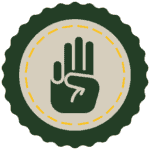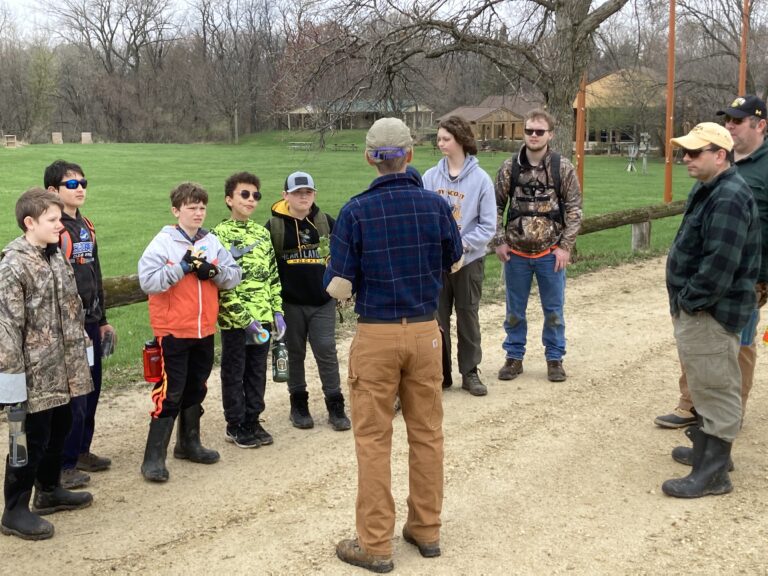Home > Camping > Conservation & Environment > Outdoor Ethics and Leave No Trace
From a Cub Scout’s first hike in a local park to the thrill of our High Adventure bases, from our backyard to the backcountry, our outdoor ethics guide us to be responsible outdoor citizens — protecting our natural world for generations to come and being considerate of other visitors. Scouting has a long, proud tradition of conservation service to the nation. How do we maintain our outdoor ethics and preserve that tradition? By heeding the challenge in the Outdoor Code.
Source: https://www.scouting.org/outdoor-programs/outdoor-ethics/
The Outdoor Code was added to the Scouts BSA Handbook in 1948. It was introduced in recognition of the importance of our relationship with nature and our responsibility to be conservationists. Conservation is the responsible stewardship of the environment to preserve natural ecosystems while ensuring that balanced consideration is also given to human needs. (Handbook for Outdoor Ethics Guide and Outdoor Ethics Guide Advisor, Appendix B, p. 23)
For more information, see the BSA’s Outdoor Ethics Guide.

As an American, I will do my best to—
Be clean in my outdoor manners.
Be careful with fire.
Be considerate in the outdoors.
Be conservation-minded.
Instilling values in young people and preparing them to make moral and ethical choices throughout their lifetime is the mission of the Boy Scouts of America. Leave No Trace helps reinforce that mission, and reminds us to respect the rights of other users of the outdoors as well as future generations. Appreciation for our natural environment and a knowledge of the interrelationships of nature bolster our respect and reverence toward the environment and nature.
Leave No Trace is an awareness and an attitude rather than a set of rules. It applies in your backyard or local park as much as in the backcountry. We should all practice Leave No Trace in our thinking and actions–wherever we go.
We learn Leave No Trace by sharing the principles and then discovering how they can be applied. Leave No Trace instills an awareness that spurs questions like “What can we do to reduce our impact on the environment and on the experiences of other visitors?” Use your resources, judgment and experience to tailor camping and hiking practices to the environment where the outing will occur. Forest, mountain, seashore, plains, freshwater, and wetland environments all require different minimum impact practices.
Source: https://www.scouting.org/outdoor-programs/leave-no-trace/

Scouting has embraced the Leave No Trace program as a core of our Outdoor Ethics. Leave No Trace is a key partner.
● Their Principles of Leave No Trace provide a strong, science-based set of practical tools to guide our outdoor activities.
● They have strong teaching emphasis with excellent supporting materials.
● Their training structure of Master Educators and Trainers provides a model for educating our Scouts and Scouters.
● Their Skills and Ethics pamphlets are key practical guides to ethical decision making and skills for many Scouting outdoor environments and activities.
Source: http://outdoorethics-bsa.org/programs/
Proper trip planning and preparation helps hikers and campers accomplish trip goals safely and enjoyably while minimizing damage to natural and cultural resources. Campers who plan ahead can avoid unexpected situations, and minimize their impact by complying with area regulations such as observing limitations on group size. Schedule your trek to avoid times of high use. Obtain permits or permission to use the area for your trek.
Proper planning ensures
Damage to land occurs when visitors trample vegetation or communities of organisms beyond recovery. The resulting barren areas develop into undesirable trails, campsites, and soil erosion.
Concentrate Activity, or Spread Out?
These guidelines apply to most alpine settings and may be different for other areas, such as deserts. Learn the Leave No Trace techniques for your crew’s specific activity or destination. Check with land managers to be sure of the proper technique.
This simple yet effective saying motivates backcountry visitors to take their trash home with them. It makes sense to carry out of the backcountry the extra materials taken there by your group or others. Inspect your campsite for trash or spilled foods. Accept the challenge of packing out all trash, leftover food, and litter.
Sanitation
Backcountry users create body waste and wastewater that require proper disposal.
Wastewater. Help prevent contamination of natural water sources: After straining food particles, properly dispose of dishwater by dispersing at least 200 feet (about 80 to 100 strides for a youth) from springs, streams, and lakes. Use biodegradable soap 200 feet or more from any water source.
Human Waste. Proper human waste disposal helps prevent the spread of disease and exposure to others. Catholes 6 to 8 inches deep in humus and 200 feet from water, trails, and campsites are often the easiest and most practical way to dispose of feces.
Allow others a sense of discovery, and preserve the past. Leave rocks, plants, animals, archaeological artifacts, and other objects as you find them. Examine but do not touch cultural or historical structures and artifacts. It may be illegal to remove artifacts.
Minimize Site Alterations
Do not dig tent trenches or build lean-tos, tables, or chairs. Never hammer nails into trees, hack at trees with hatchets or saws, or damage bark and roots by tying horses to trees for extended periods. Replace surface rocks or twigs that you cleared from the campsite. On high-impact sites, clean the area and dismantle inappropriate user-built facilities such as multiple fire rings and log seats or tables.
Good campsites are found, not made. Avoid altering a site, digging trenches, or building structures.
Some people would not think of camping without a campfire. Yet the naturalness of many areas has been degraded by overuse of fires and increasing demand for firewood.
Lightweight camp stoves make low-impact camping possible by encouraging a shift away from fires. Stoves are fast, eliminate the need for firewood, and make cleanup after meals easier. After dinner, enjoy a candle lantern instead of a fire.
If you build a fire, the most important consideration is the potential for resource damage. Whenever possible, use an existing campfire ring in a well-placed campsite. Choose not to have a fire in areas where wood is scarce—at higher elevations, in heavily used areas with a limited wood supply, or in desert settings.
True Leave No Trace fires are small. Use dead and downed wood that can be broken easily by hand. When possible, burn all wood to ash and remove all unburned trash and food from the fire ring. If a site has two or more fire rings, you may dismantle all but one and scatter the materials in the surrounding area. Be certain all wood and campfire debris is cold out.
Quick movements and loud noises are stressful to animals. Considerate campers practice these safety methods:
You are too close if an animal alters its normal activities.
Thoughtful campers respect other visitors and protect the quality of their experience.
Be considerate of other campers and respect their privacy.
If you would like to schedule a BSA Leave No Trace 101 for your unit, contact the HAC Council Conservation Committee (HACconservation@gmail.com) for scheduling or use the contact form below.
If you would like to increase your own conservation competency, lead BSA Leave No Trace 101 sessions, or become involved in LNT efforts in the council, consider becoming a BSA Leave No Trace Trainer or a Master Educator.
BSA Leave No Trace Training sessions can be found on this calendar.
BSA Leave No Trace Master Educator can be found on this calendar.
LNT Training and Courses can be found on this page.
For more BSA resources on Outdoor Ethics and Leave No Trace, see this page.

Hawkeye Area Council, Scouting America
660 32nd Avenue SW
Cedar Rapids, IA 52404
Toll Free: 877.HAWKBSA
Office: (319) 862-0541
Scout Shop: (319) 261-3750
Fax: (319) 862-0544